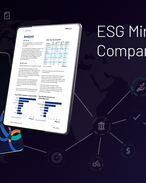In technical terms what happened was the currency-effect negated commodity-price moves, a long-overdue event which will be welcomed by all resource companies, even though they would have preferred the dollar fall without the commodity price fall.
For economists, what happened was an example of an “automatic stabiliser” working as it should in a country with an open market and a floating exchange rate.
For investors in mining companies, and for the people working in those companies, the question now is whether last week’s twin moves of currencies and commodities was a flash in the pan or the start of something more significant.
There is no easy answer to that question and while we would all like to believe that another step has been taken towards a “new normal” of strong economic growth without the need for government hand-outs and money-printing we’ve actually been here before.
In fact, you might be amused to discover almost nothing has changed since the start of 2014 in what Dryblower likes to think is a way of living out the lyrics of a song from the 1970s: “Everything old is new again”
To understand consider gold, the world’s ultimate currency and one of the ultimate commodities, a status it shares with oil.
Last week, the gold price closed at $US1228.30 an ounce and the Australian dollar closed at 90.36c to produce an Australian gold price of $A1359.34/oz.
On January 2, the first trading day of the year, gold opened at $US1219.75 and the first fix of the Aussie dollar by the Reserve Bank was 89.12c – producing an Australian gold price of $A1368.66.
The Australian gold price difference after a year of changing asset values, a hot civil war in Ukraine, Europe receding back into recession, China’s growth slowing and the US edging toward higher interest rates as its economy recovers was a fall of $A9.32/oz, or 0.7%.
In other words an awful lot has happened over the first nine months of 2014 but very little has changed if you use gold as a guide.
It’s different for iron ore producers. They’re going through a process which older and wiser heads have been predicting for two years because it has been for that long that the Chinese steel industry has been slowing and to imagine that China’s steel industry could slow while also consuming more iron ore is ludicrous.
So, on the one hand gold is telling us that not much has changed. Iron ore is a different story, but also a predictable one.
On the other hand it is possible that what happened last week was the start of something significant with the difference between the US and the rest of the world starting to shine through.
What that means is that last week’s US3c fall in the value of the Australian dollar was not so much a loss of confidence in the Aussie currency as a vote of confidence in the US economy and its currency.
If that was the case then the world really did take a step towards the new normal that has taken a long time to arrive after the tumultuous events of 2008’s global financial crisis.
From Dryblower’ perspective the currency change was another reminder that there will be no quick return to the boom conditions which drove the resources sector to record highs a few years ago.
Too much of that growth was dependent on government hand-outs and increasing levels of government debt, a game of money-printing which is coming to an end in the US but might continue for a bit longer in Europe and Japan.
For the mining industry, which is essentially a price-taking business that has little control over what buyers will pay for minerals and metals, the new normal of a dominant US and a dominant US dollar, means it is time for even tighter focus on what can be controlled, and that’s the cost of production.
The next few months will almost certainly see commodity and currency values buffeted by volatility as investors shuffle funds from one asset class to another in a search for value, whether that be in currencies, commodities or equities.
It is the near certainty of an increase in volatility such as that seen last week which will see more examples of currencies and commodities giving and taking – with the great unknown being whether at this time next year we will be in the same position as today.
Dryblower is a columnist for affiliated site MiningNews.net. First published in MNN yesterday.

























